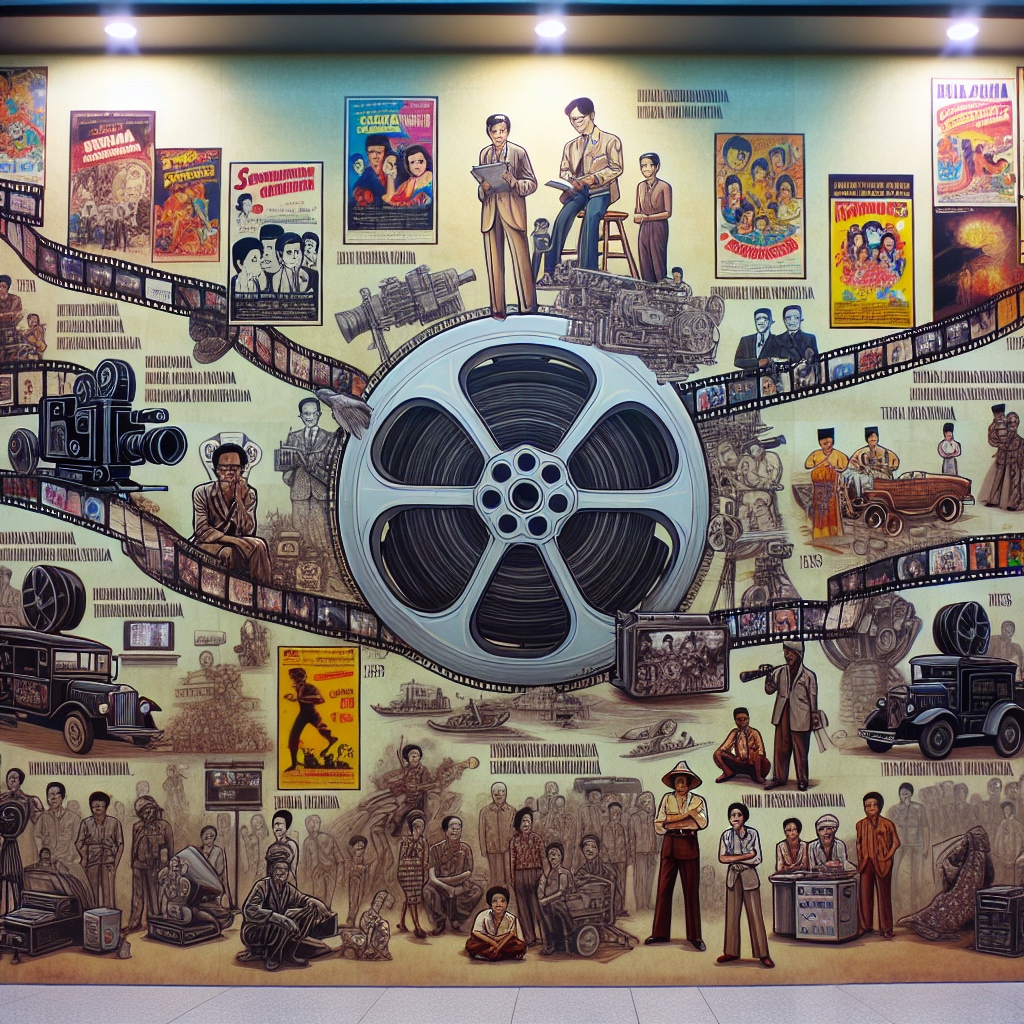-
Table of Contents
Sinema Indonesia: Dari Masa ke Masa

Introduction
Sinema Indonesia, or Indonesian cinema, has a rich and diverse history that spans over a century. From its humble beginnings in the early 20th century to its current status as a thriving industry, Indonesian cinema has evolved and adapted to the changing times. In this article, we will explore the journey of Indonesian cinema through different eras, highlighting its major milestones, influential filmmakers, and significant contributions to the global film industry.
The Silent Era: 1920s-1930s
The birth of Indonesian cinema can be traced back to the 1920s when the first silent films were produced. During this era, films were primarily influenced by Western cinema, particularly Hollywood. The themes and narratives often revolved around romance, adventure, and folklore. One of the notable films from this period is “Loetoeng Kasaroeng” (1926), directed by L. Heuveldorp, which is considered the first Indonesian feature film.
The Golden Age: 1950s-1960s
The 1950s and 1960s marked the golden age of Indonesian cinema. This period saw a surge in film production and the emergence of talented filmmakers who brought Indonesian stories to the big screen. One of the most influential directors of this era was Usmar Ismail, who directed critically acclaimed films like “Darah dan Doa” (1950) and “Tiga Dara” (1956). These films explored social issues and reflected the aspirations of the newly independent nation.
The New Order Era: 1970s-1990s
The New Order era, under the leadership of President Suharto, had a significant impact on Indonesian cinema. The government imposed strict censorship and control over the film industry, leading to a decline in artistic freedom. However, this period also witnessed the rise of commercial cinema, with action and horror films gaining popularity among audiences. Notable directors of this era include Teguh Karya, who directed “Cinta Pertama” (1973), and Sjumandjaja, known for his film “Pengantin Remaja” (1971).
The Reformasi Era: 2000s-Present
The Reformasi era, which began in 1998 with the fall of President Suharto, brought about significant changes in Indonesian cinema. Filmmakers were now able to explore more diverse themes and experiment with different storytelling techniques. This period saw the emergence of a new generation of filmmakers, such as Riri Riza, who directed “Eliana, Eliana” (2002), and Joko Anwar, known for his critically acclaimed film “Pengabdi Setan” (2017). Indonesian cinema also gained international recognition during this era, with films like “The Raid” (2011) and “The Act of Killing” (2012) receiving widespread acclaim.
Challenges and Opportunities
While Indonesian cinema has come a long way, it still faces several challenges. One of the main obstacles is the dominance of Hollywood films in the local market. Indonesian filmmakers often struggle to compete with big-budget Hollywood productions, which receive more screen time and marketing support. Additionally, the lack of funding and infrastructure for independent filmmakers hinders the growth of alternative voices in Indonesian cinema.
However, there are also numerous opportunities for the future of Indonesian cinema. The rise of digital platforms and streaming services has opened up new avenues for distribution and audience reach. Indonesian filmmakers can now showcase their work to a global audience, bypassing traditional distribution channels. Furthermore, the increasing interest in Southeast Asian cinema among international film festivals and distributors provides a platform for Indonesian films to gain recognition and exposure.
Conclusion
In conclusion, Sinema Indonesia has evolved and transformed over the years, reflecting the social, political, and cultural changes in the country. From the silent era to the golden age, and from the New Order era to the Reformasi era, Indonesian cinema has witnessed both challenges and triumphs. Despite the obstacles it faces, Indonesian cinema continues to grow and make its mark on the global film industry. With the support of audiences, filmmakers, and the government, the future of Indonesian cinema looks promising. As the industry continues to evolve, it is crucial to preserve and celebrate the rich heritage of Indonesian cinema while embracing new opportunities for innovation and creativity.





